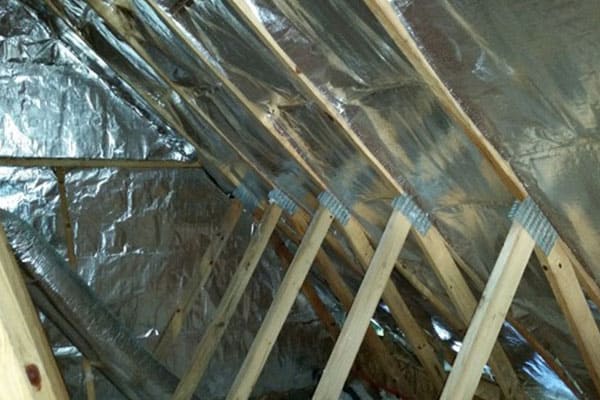

Radiant barrier insulation pet films zip#
You can see for yourself take a piece of metalized film that is perforated, put it in a zip top baggie with a wet paper towel and wait a few weeks to see the effect. Elizabeth Spencer Types of Radiant Barriers Radiant barriers consist of a highly reflective material, usually aluminum foil, which is applied to one or both sides of a number of substrate materials such as kraft paper, plastic films, cardboard, oriented strand board, and air infiltration barrier material. *The worst thing you can do to a metalized film product is perforate it! Once you pierce the surface, you allow air/moisture to get in every 1/2 inch of the surface and because moisture can pass between the layers, it can also get in between the clear coating and the scrim and “consume” the super thin layer of aluminum. These products utilize an artificial coating and claim it protects against oxidation however, many versions of the mylar foil films have shown problems in stopping oxidation when the coating fails and the foil layer practically disappears from the inner scrim! Metalized aluminum, however, is made up of a very thin layer of aluminum (approximately 1/200th of the thickness used in AtticFoil® Radiant Barrier) deposited onto a polymer film. This is generally due to the fact that the oxide layer will rarely grow to a thickness that either absorbs large amounts of thermal radiation, or consumes the aluminum entirely, resulting in an optically clear 100% aluminum oxide film.”1 “In the case of an aluminum foil, for example, thicknesses for radiant barrier and reflective insulation applications generally range from 6 to 10 microns even in the most aggressive of environments, heavy oxidation of the foil surface will have little, if any, impact on the emissive and reflective properties of the surface. After this process of coating itself, the foil is still pure enough to continue to function as a radiant barrier (either by reflecting heat or blocking heat via emissivity). That coat will develop to a thickness that prevents the foil from continuing to oxidize so it will not degrade or deteriorate over time. When an aluminum surface goes through oxidation, it produces an organic clear coat/layer/skin over the top of itself. Mylar ® A is made of polyethylene terephthalate (PETP) and belongs to the surface insulation materials of insulation class B (up to 130☌).

It’s made from 99.5% pure aluminum and a high quality aluminum is NOT AFFECTED by the natural oxidation process of metal. The reason is because AtticFoil® is a pure aluminum product. Oxidation of Aluminum Radiant Barriers & Metalized Filmsĭoes AtticFoil® lose reflectivity over time because of oxidation? The objective of this study was to determine the ability of radiant insulation hutch covers to moderate the effect of ambient temperature and radiant energy. Radiant Heat Flooring – Over Conditioned Spaces One side radiant barrier can be applied to insulating materials such as polyisocyanurate, rigid foam, bubble insulation, or OSB.Radiant Heat Flooring – Over Non-Conditioned Spaces.Cathedral Ceilings – Hot/Mixed Climates.


 0 kommentar(er)
0 kommentar(er)
